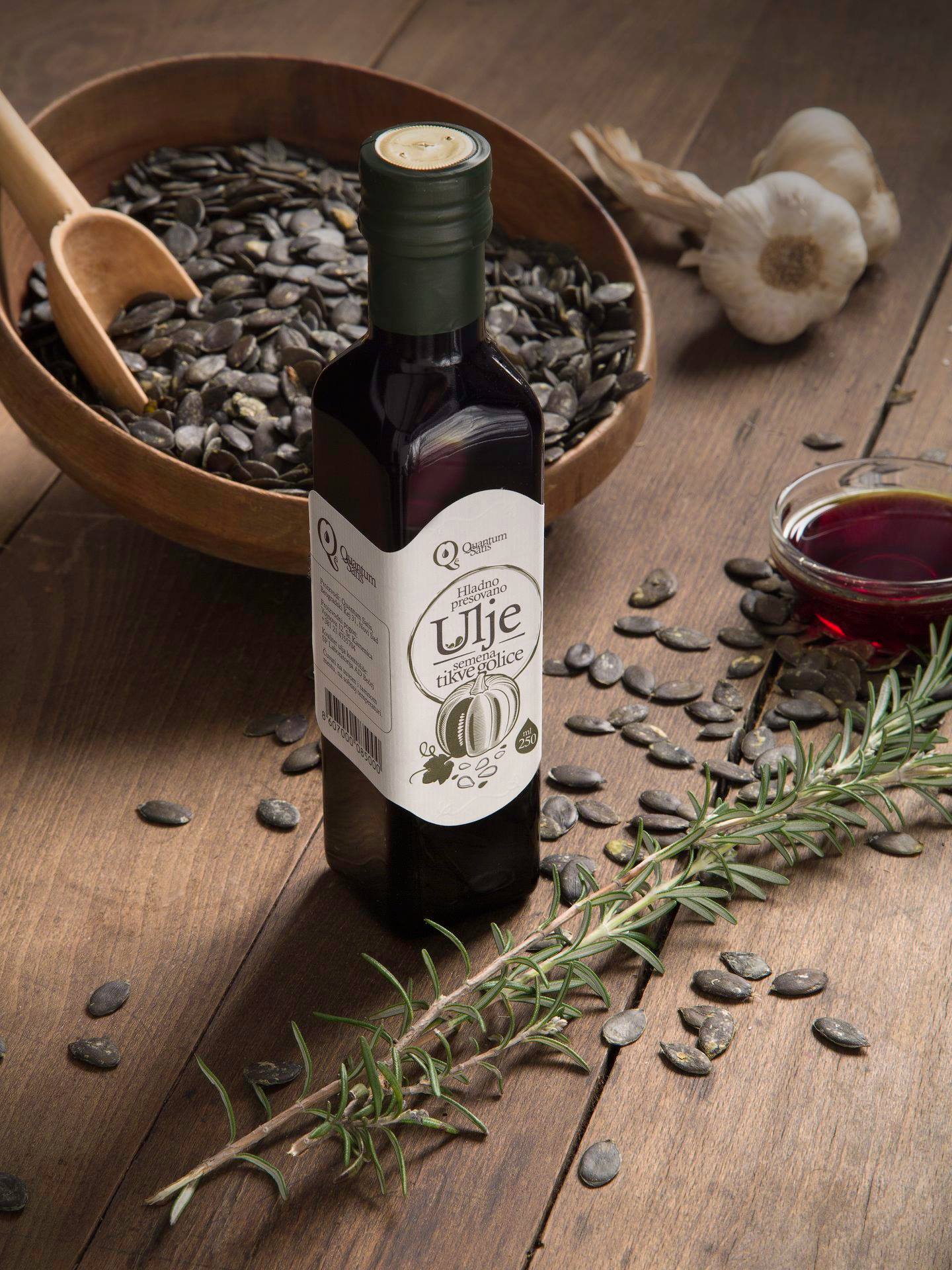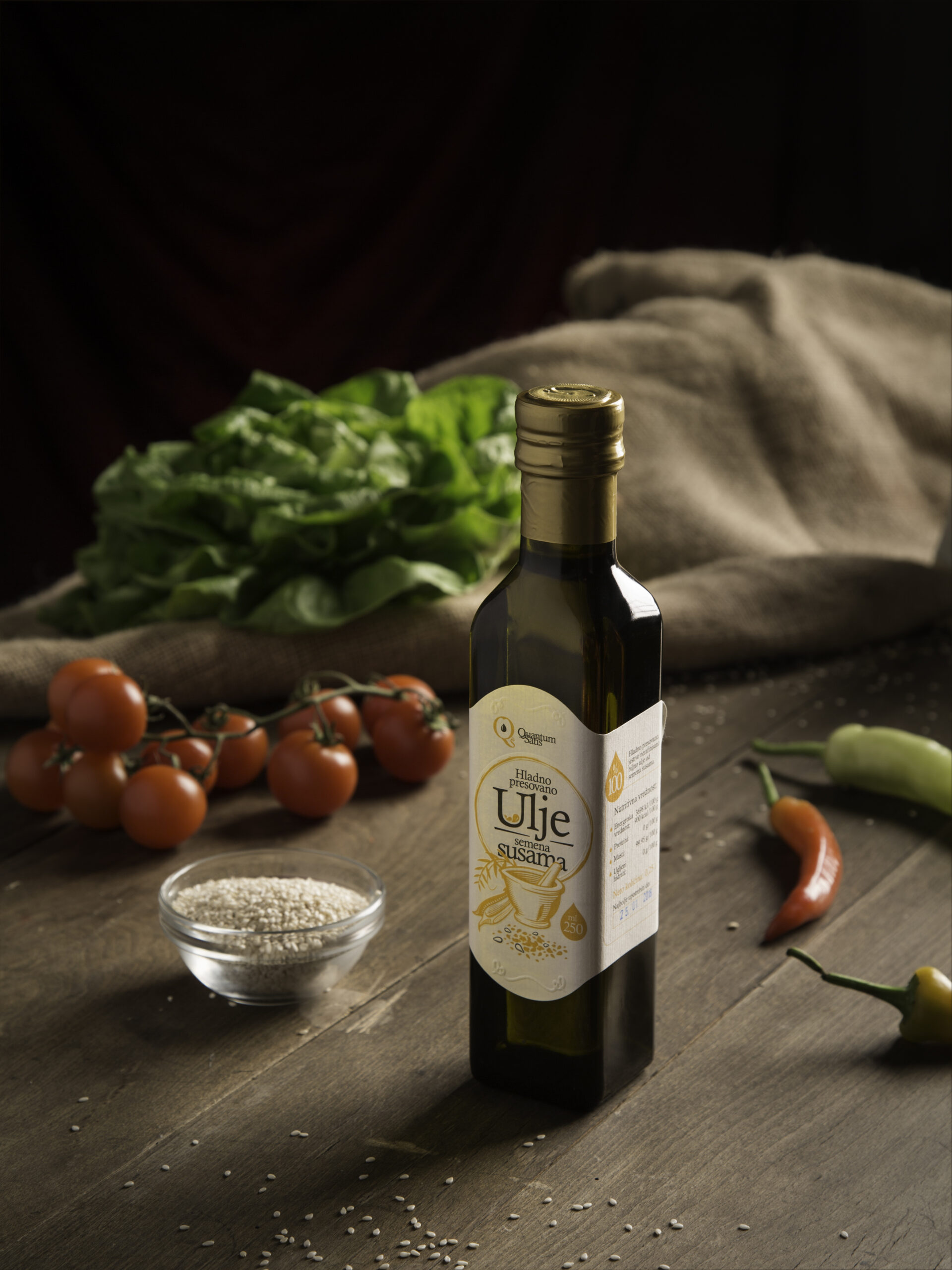Cold pressed oil
Unrefined edible oils, depending on the technological process of production, include:
- cold pressed oils and
- virgin oils.
For both cold-pressed and virgin oils in our production that are found on the market, the raw materials are clearly indicated.
Owing to the fact that none of the refining process, not even a partial refining, are used in manufacturing of our edible unrefined oils, our oils keep the original smell and taste of the raw material. In order to preserve specific, recognizable sensory properties of these oils, we use specific technology based on pressing. Owing to the careful selection of raw materials, the method of extraction and the absence of refining, our edible unrefined oils display distinctive aroma while completely preserving important constitutive ingredients.
Briefly speaking, our cold pressed oils are produced by mechanical means only, i.e. by direct pressing of previously cleaned raw material (raw dried seeds), in continuous screw presses, and without any refining or application of solvents i.e. oil extraction. The temperature of oil leaving the press is to be below 50°C.
For more information on oils, their categorization, properties and applications, please visit our Blog and see the articlečlananak "About oils"..
Pumpkin seed oil
Pumpkin seed oil is one of the special unrefined edible oils that is produced exclusively by a mechanical process and it can be classified into a group of functional food products.
Quantum Satis cold pressed pumpkin seed oil is produced by direct pressing of raw, dried pumpkin seed in continuous screw presses. It is solely owing to this type of processing that the extracted oil is significantly richer in bio active components such as: vitamins, provitamins, sterols, phospholipids, squalene, etc. which, along with particular fatty acids, provide the nutritive value of the pumpkin seed oil.
Pumpkin seed oil belongs to the group of oils of high biological value due to its favorable composition of fatty acids and various minor components with the overall positive impact on the human body due to various beneficial effects such as anti-inflammatory, diuretic (they induce urination), antimicrobial (they fight bacteria), blocking free radicals, etc.
More information on this particular pumpkin and pumpkin seed oil can be found in our Blog, in the article "About pumpkin seed oil".


Linseed oil
As a cultivated plant flax, is grown in three purposes:
- - Only for fiber - textile flax
- - Seed - oil flax and
- - Combined - for VLKN and seeds
Linseed is rich in oil and protein, however, oil content, it depends on the sort. Linseed oil belongs to the group of so-called dryable oil due to its high content of unsaturated fatty acids. Raw linseed oil has a dark yellow color and pungent, specific smell and taste.
Today, cold-pressed linseed oil is experiencing a renaissance, thanks to the exceptionally high content of essential fatty acids, linoleic and linolenic. At the stores, organic food appears as a special oil in small packages with special nutritional recommendations.
Due to the specific composition of fatty acids, flaxseed oil is very sensitive to oxidation and has a rather weak viability.
Sesame seed oil
Sesame, Sesamum indicum L., is probably the oldest cultivated plant and oldest oilseeds used in human nutrition. Sesame originates from India. Archaeological evidence suggests that the sesame seeds were highly prized oilseeds even 4000 years ago. It is widely used in medicine, cookery, pharmaceuticals, cosmetics, even for the preparation of alcoholic beverages.
Sesame, as the old agricultural crops, has many sorts and varieties. Indian sesame seeds are white-yellowish in colour, in contrast to the oriental sesame which has black seeds. In addition, brown and yellow seeds can also be found.
Sesame oil is among the first class edible oils. It has a very pleasant smell and taste and has very good viability. Due to the high oxidative stability, this oil is often used in the process of frying food. It is used mainly for edible purposes but it has its application in some cosmetic products, which are specifically in need of a stable oil.
In the fatty acid composition of sesame oil oleic and linoleic acids are the most prominent, almost in equal amounts. The antioxidants, sesamin and sesamolin, which are present in this oil and not found in other oils, give sesame seed oil its good viability.

